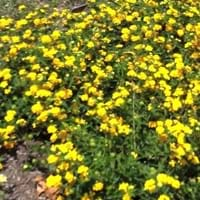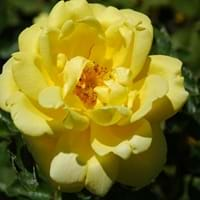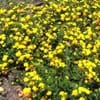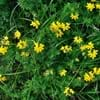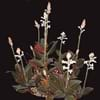Life Span
Perennial
Perennial
Type
Tender Perennial
Perennial
Origin
South America, Argentina, Brazil, Chile
Hybrid origin
Types
big-sage, big-sage,white-sage
Not Available
Habitat
open Woodlands, Semi arid regions, Subtropical climates
gardens, Pastures, Prairies, Terrestrial, Tropical regions
USDA Hardiness Zone
8-15
3-8
Sunset Zone
H1, H2, 6, 7, 8, 9, 10, 11, 12, 13, 14, 15, 16, 17, 18, 19, 20, 21, 22, 23, 24
1a, 1b, 2a, 2b, 3a, 3b, 4, 5, 6, 7, 8, 9, 10, 11, 12, 13, 14, 15, 16, 17, 18, 19, 20, 21, 22, 23, 24
Habit
Oval or Rounded
Oval or Rounded
Minimum Height
Not Available
Minimum Width
Not Available
Flower Color
Gold
Not Available
Flower Color Modifier
Bicolor
Not Available
Fruit Color
Blue, Black
Non Fruiting Plant
Leaf Color in Spring
Dark Green
Not Available
Leaf Color in Summer
Dark Green
Not Available
Leaf Color in Fall
Dark Green
Not Available
Leaf Color in Winter
Light Green
Light Green
Leaf Shape
Oval with toothed margin
Pinnate
Plant Season
Spring, Summer, Fall, Winter
Summer, Fall
Sunlight
Full Sun, Partial Sun
Full Sun, Partial Sun
Type of Soil
Clay, Loam, Sand
Loam, Sand
The pH of Soil
Acidic, Neutral, Alkaline
Acidic, Neutral
Soil Drainage
Average
Well drained
Bloom Time
Indeterminate
Early Summer, Summer, Late Summer, Early Fall
Tolerances
Drought
Drought
Where to Plant?
Container, Ground
Ground, Pot
How to Plant?
Stem Cutting
Grafting, Stem Planting, Transplanting
Plant Maintenance
Medium
Medium
Watering Requirements
Does not require regular watering
Form a Soil ring to water efficiently, Requires regular watering, Water twice a day in the initial period, Water when soil is dry
In Summer
Lots of watering
Lots of watering
In Spring
Moderate
Moderate
In Winter
Average Water
Average Water
Soil pH
Acidic, Neutral, Alkaline
Acidic, Neutral
Soil Type
Clay, Loam, Sand
Loam, Sand
Soil Drainage Capacity
Average
Well drained
Sun Exposure
Full Sun, Partial Sun
Full Sun, Partial Sun
Pruning
Remove damaged leaves, Remove dead branches, Remove dead leaves
Prune if you want to improve plant shape, Remove damaged leaves, Remove dead leaves, Remove deadheads, Shape and thin as needed
Fertilizers
All-Purpose Liquid Fertilizer
All-Purpose Liquid Fertilizer, organic fertlizers
Pests and Diseases
Red blotch, Whiteflies
Aphids, Bacterial Diseases, Mites, Slugs
Plant Tolerance
Drought
Drought
Flower Petal Number
Single
Not Available
Edible Fruit
No
Not Available
Fragrant Bark/Stem
Yes
No
Foliage Texture
Medium
Not Available
Foliage Sheen
Matte
Not Available
Attracts
Butterflies
Not Available
Allergy
Skin irritation
no allergic reactions
Aesthetic Uses
Not Available
Beautification, Bouquets
Beauty Benefits
Not Available
Not Available
Environmental Uses
Air purification
Air purification
Medicinal Uses
anti-cancer, Antirheumatic, Antiulcerogenic, Malaria
No Medicinal Use
Part of Plant Used
Leaves
Flowers
Other Uses
Showy Purposes
Showy Purposes, Used as Ornamental plant
Used As Indoor Plant
Yes
No
Used As Outdoor Plant
Yes
Yes
Garden Design
Bedding Plant, Container, Feature Plant, Foundation, Hanging Basket, Mixed Border, Topiary / Bonsai / Espalier, Tropical
Container, Cutflower, Feature Plant, Foundation, Mixed Border
Botanical Name
LANTANA camara 'New Gold'
ROSA 'Allgold'
Common Name
Lantana, New Gold Lantana
Floribunda Rose
In Hindi
new gold lantana
रोजा allgold
In German
Wandelröschen
rosa Allgold
In French
Lantana camara
rosa TousPlaqué
In Spanish
Lantana camara
rosa allgold
In Greek
Lantana camara
rosa allgold
In Portuguese
Lantana camara
rosa allgold
In Polish
Lantana pospolita
rosa allgold
In Latin
Lantana camara
Rosa allgold
Phylum
Magnoliophyta
Not Available
Class
Magnoliopsida
Not Available
Family
Verbenaceae
Rosaceae
Clade
Angiosperms, Asterids, Eudicots
Angiosperms, Eudicots, Rosids
Tribe
Not Available
Not Available
Subfamily
Not Available
Rosoideae
Importance of New Gold Lantana and Floribunda Rose
Want to have the most appropriate plant for your garden? You might want to know the importance of New Gold Lantana and Floribunda Rose. Basically, these two plants vary in many aspects. Compare New Gold Lantana and Floribunda Rose as they differ in many characteristics such as their life, care, benefits, facts, etc. Every gardener must at least have the slightest clue about the plants he wants to plant in his garden. Compare their benefits, which differ in many ways like facts and uses. The medicinal use of New Gold Lantana is anti-cancer, Antirheumatic, Antiulcerogenic and Malaria whereas of Floribunda Rose is No Medicinal Use. New Gold Lantana has beauty benefits as follows: Not Available while Floribunda Rose has beauty benefits as follows: Not Available.
Compare Facts of New Gold Lantana vs Floribunda Rose
How to choose the best garden plant for your garden depending upon its facts? Here garden plant comparison will help you to solve this query. Compare the facts of New Gold Lantana vs Floribunda Rose and know which one to choose. As garden plants have benefits and other uses, allergy is also a major drawback of plants for some people. Allergic reactions of New Gold Lantana are Skin irritation whereas of Floribunda Rose have no allergic reactions respectively. Having a fruit bearing plant in your garden can be a plus point of your garden. New Gold Lantana has no showy fruits and Floribunda Rose has showy fruits. Also New Gold Lantana is not flowering and Floribunda Rose is not flowering . You can compare New Gold Lantana and Floribunda Rose facts and facts of other plants too.
